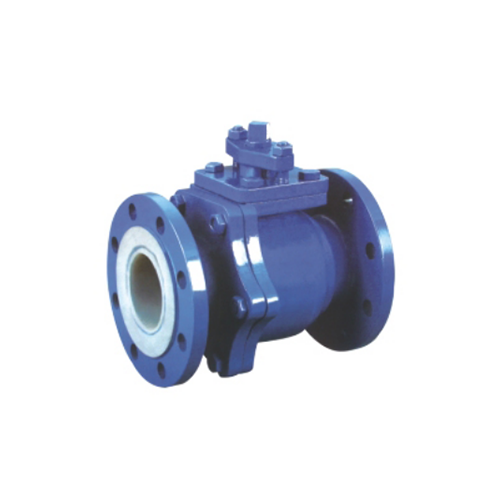
Check Valve Testing Procedures and Quality Standards
1. Introduction
Check valves, also known as non-return valves, are essential components in piping systems, ensuring unidirectional flow and preventing backflow. They are widely used in industries such as oil and gas, water treatment, chemical processing, and power generation. To ensure reliability, safety, and compliance with industry standards, check valves must undergo rigorous testing and quality control procedures.
This document outlines the standard testing procedures and quality standards applicable to check valves, covering material inspection, functional testing, pressure testing, and compliance with international standards.
---
2. Material Inspection and Quality Control
Before manufacturing and assembly, raw materials must be inspected to ensure they meet specified requirements. Key material inspection procedures include:
2.1 Chemical Composition Analysis
- Verify material grades (e.g., carbon steel, stainless steel, duplex steel) using spectrometers.
- Ensure compliance with ASTM, ASME, or EN standards.
2.2 Mechanical Property Testing
- Tensile strength, yield strength, and elongation tests per ASTM A370.
- Hardness testing (Rockwell or Brinell) to confirm material durability.
2.3 Non-Destructive Testing (NDT)
- Ultrasonic Testing (UT): Detects internal flaws in cast or forged components.
- Dye Penetrant Testing (PT): Identifies surface cracks.
- Magnetic Particle Testing (MT): Used for ferromagnetic materials to detect surface and near-surface defects.
- Radiographic Testing (RT): X-ray or gamma-ray inspection for weld integrity.
2.4 Dimensional Inspection
- Verify critical dimensions (seat diameter, flange thickness, bore size) against engineering drawings.
- Use precision measuring tools (calipers, micrometers, CMM machines).
---
3. Functional Testing Procedures
Functional testing ensures that check valves operate correctly under simulated service conditions.
3.1 Shell Test (Hydrostatic Pressure Test)
- Purpose: Verify valve body integrity under pressure.
- Procedure:
- Fill the valve body with water or another test fluid.
- Apply pressure (1.5 times the maximum working pressure) for a specified duration (typically 3-5 minutes).
- Inspect for leaks or deformations.
- Standards: API 598, ISO 5208, ASME B16.34.
3.2 Seat Leakage Test
- Purpose: Ensure tight sealing when the valve is closed.
- Procedure:
- Install the valve in a test rig with pressure applied upstream.
- Measure leakage rate (bubbles per minute or mL/min).
- Acceptable leakage limits vary by valve class (e.g., API 598 allows minimal leakage for metal-seated valves).
- Standards: API 598, ISO 5208.
3.3 Backpressure Test (Reverse Flow Test)
- Purpose: Confirm that the valve closes properly under backflow conditions.
- Procedure:
- Simulate reverse flow by applying pressure downstream.
- Measure the cracking pressure (minimum pressure required to open the valve).
- Ensure the disc reseats properly without excessive slamming.
3.4 Flow Resistance Test
- Purpose: Evaluate pressure drop across the valve.
- Procedure:
- Measure differential pressure at various flow rates.
- Compare results with manufacturer specifications.
---
4. Performance and Endurance Testing
4.1 Cycling Test (Durability Test)
- Purpose: Assess valve longevity under repeated operation.
- Procedure:
- Open and close the valve multiple times (e.g., 10,000 cycles).
- Inspect for wear, seat damage, or mechanical failure.
- Standards: API 6D, ISO 15848.
4.2 High-Temperature and Cryogenic Testing
- Purpose: Verify performance under extreme temperatures.
- Procedure:
- Test valves in temperature-controlled chambers.
- Check for material embrittlement, thermal expansion, and sealing integrity.
- Standards: API 6D, BS 6364 (for cryogenic valves).
4.3 Corrosion Resistance Testing
- Purpose: Ensure material suitability for corrosive environments.
- Procedure:
- Salt spray test (ASTM B117) for coated valves.
- Pitting and crevice corrosion tests for stainless steel valves (ASTM G48).
---
5. Quality Standards and Certifications
Check valves must comply with international standards to ensure safety and reliability.
5.1 API Standards
- API 6D: Specifies requirements for pipeline valves, including check valves.
- API 598: Defines valve inspection and testing procedures.
- API 607/API 6FA: Fire-safe testing for valves in flammable service.
5.2 ASME Standards
- ASME B16.34: Covers pressure-temperature ratings and material requirements.
- ASME Section VIII: Pressure vessel code applicable to valve design.
5.3 ISO Standards
- ISO 5208: Industrial valve pressure testing.
- ISO 10434: Bolted bonnet steel gate valves (includes check valves).
- ISO 15848: Fugitive emissions testing for valves.
5.4 Other Industry Standards
- ANSI/FCI 70-2: Control valve seat leakage classifications.
- BS 6364: Cryogenic valve testing.
- EN 12266: European standard for industrial valve testing.
5.5 Certification Requirements
- CE Marking: Compliance with EU Pressure Equipment Directive (PED).
- PED 2014/68/EU: Mandatory for valves used in pressure equipment.
- ATEX Certification: Required for valves in explosive atmospheres.
---
6. Final Inspection and Documentation
Before shipment, a final inspection ensures all quality criteria are met.
6.1 Visual and Dimensional Check
- Confirm proper assembly, surface finish, and marking.
- Verify compliance with purchase order specifications.
6.2 Documentation Review
- Material Test Reports (MTRs): Certify material composition and properties.
- Inspection and Test Reports (ITRs): Record test results.
- Certificates of Conformity (CoC): Validate compliance with standards.
- Manufacturer’s Data Report (MDR): Required for ASME valves.
6.3 Packaging and Preservation
- Apply rust inhibitors for carbon steel valves.
- Use protective caps to prevent damage during transit.
- Ensure proper labeling (size, pressure rating, material grade).
---
7. Conclusion
Check valves play a critical role in fluid control systems, and their reliability depends on stringent testing and quality assurance. By adhering to material inspections, functional tests, performance evaluations, and international standards, manufacturers can ensure that check valves meet operational requirements and safety regulations.
Proper documentation and certification further validate compliance, providing end-users with confidence in valve performance. Continuous improvement in testing methodologies and adherence to evolving industry standards will further enhance valve quality and longevity in demanding applications.
This comprehensive approach to testing and quality control ensures that check valves perform efficiently, minimizing downtime and safety risks in industrial operations.
Este sitio web utiliza cookies para garantizar que obtenga la mejor experiencia en nuestro sitio web.
Comentario
(0)